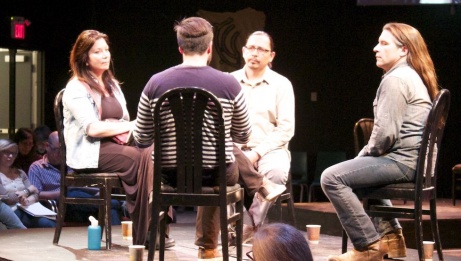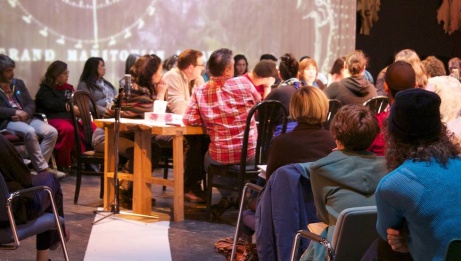Excerpt from Prelude Magazine
Sarah Garton Stanley, Associate Artistic Director NAC English Theatre, admits she was nervous.
She and Yvette Nolan, co-curators for The Summit, were about to bring together a distinguished group of 12 Indigenous leaders and artists from across the country and representatives from 11 arts organizations to explore the breadth and scope of Indigenous work on Canadian soil. But that’s not what was making Sarah nervous. It was the format they had decided to try.
“We formally changed the balance of power in the room,” Stanley said. “The First Nations, Métis and Inuit leaders and artists spoke and the representatives from organizations and institutions listened. "We wondered what we might hear if we didn’t have a voice in the room and we worried that - of course - the format would backfire. But It was amazing. A truly transformative experience.” Participants discussed theatrical work by Indigenous creators, its history, the various points of view and how education fits into the mix.
The purpose of The Summit, which took place at the Banff Centre for three days last April, was to create a vital conversation that could lead to informed choices about how to approach a larger, longer, and more involved investigation of Indigenous work, The Study.
Under the continued co-curation of Stanley and Nolan, theatre creators, students and scholars will gather on Manitoulin Island to immerse themselves in The Study. Together participants will explore aspects of the Indigenous body of performance work created across this vast land.
The Study will culminate in The Repast, a two-day presentation and conversation event produced by Corey Payette and hosted by Debajemujig Storytellers. English Theatre anticipates artistic leaders from across the country to come to the Island and to share in the fruits of this groundbreaking two-year initiative, which has the potential to fundamentally change the face of Canadian theatre.
“Theatre is a way for new and old stories to be told,” Sarah says. “In the stories told by Indigenous people, we begin to understand, more fully, our Canadian story and can own our place in the reasons why the First Nations, Metis and Inuit people have been treated the way they have. We all share this space. This investigation gives presence to that big Canadian story. And it is not an easy story but it is ours and getting more familiar with the spaces we all share will help us to tell more compelling stories to one another, and to the world, about Canada”








